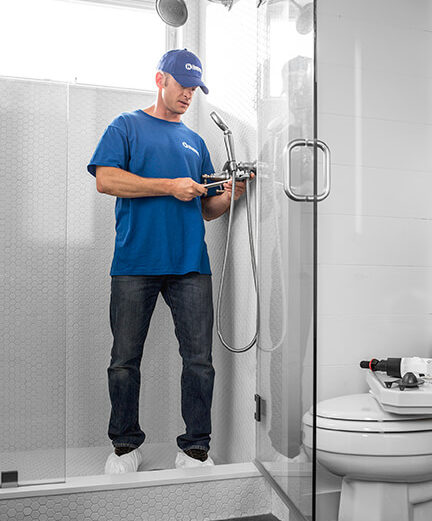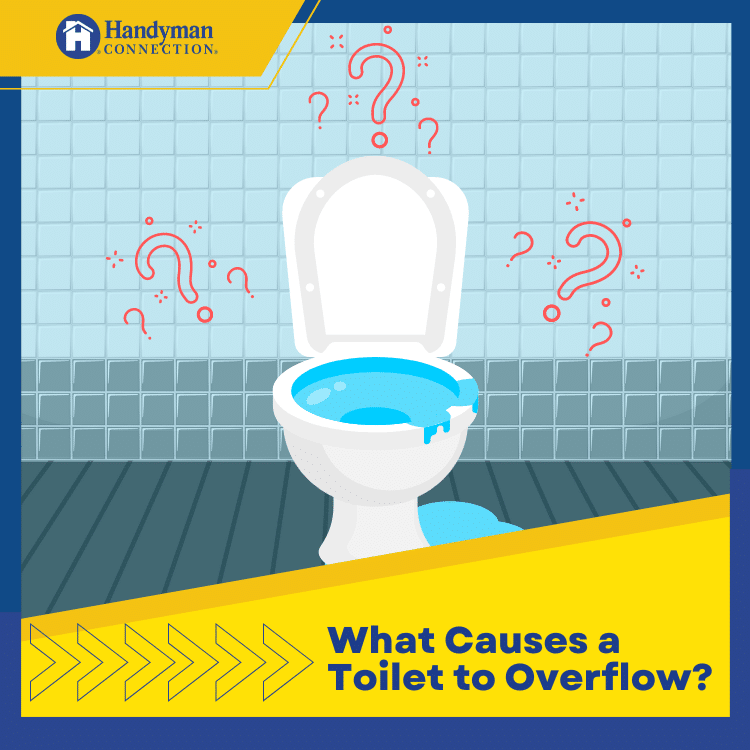We offer a wide range of services for that fresh look, or just maintenance or updates to keep your home functioning and safe. Regardless of the size of the job, we have a craftsman that can tackle it. We offer a wide range of services for that fresh look, or just maintenance or updates to keep your home functioning and safe. Regardless of the size of the job, we have a craftsman that can tackle it.

Plumbing / April 24, 2023

Toilets themselves are quite durable, and most modern commodes steadily serve their purpose for decades when well-maintained. That means that when yours is overflowing, the blame likely falls on blockages or problems with other components of your plumbing system. Here’s what you need to know about three common causes of overflows, along with how to find the best Vancouver plumbing contractors the next time you’ve got trouble with your toilet.
Perhaps the easiest overflow culprit for homeowners to identify themselves is a clogged toilet. Clogs have many causes, from attempting to flush too much paper to putting things in the bowl that shouldn’t be there. Many people don’t realize that while toilet paper is specifically designed to be plumbing-friendly, similar products like facial tissue, paper towels, cotton swabs, and feminine hygiene items don’t break down quickly and may get lodged in your pipes. This results in water backing up and overflowing the bowl.
Most obstructions don’t travel very far into your plumbing system, making it easy to see when you’ve got an issue. Although shutting off the water supply and plunging the bowl usually removes the clog, it’s sometimes necessary to bring in a plumber to break up severe or hidden blockages.
While the valve system inside your toilet tank is relatively simple, if any components aren’t functioning properly, you’ll have problems. Low water levels in the bowl and constant running are two common issues, and excess water is also a possibility. When your commode’s overflowing and you see no obvious clogs, it could be your tank float that’s the culprit.
The tank float is responsible for controlling how much water flows into your toilet bowl after each flush. Regardless of whether your tank houses a ball or cup version, if the float sits too high then too much water flows into your bowl after each flush and you may experience an overflow. While a simple adjustment might do the trick, if you’re not certain the float height is the overflow cause, call in a plumber to correctly diagnose and resolve the problem.
It’s a combination of water and air that keeps things flowing properly through your toilet pipes. Vents are a critical part of modern plumbing systems, helping to maintain equalized pressure so waste moves smoothly down drains and odours aren’t trapped in your home. Hidden behind your walls and then extending through your roof, these vents are connected to all your toilets, sinks, and baths.
When your toilet vent is clogged, your commode drains slowly or stops completely. Pressure builds in the plumbing system, and water and waste no longer move forward through your pipes, resulting in overflow. Unfortunately, because plumbing vents are difficult to access, there are no DIY fixes for blockages. You’ll need a plumbing professional to locate and clear the clog. If they find the problem using cameras and tools, they’ll be able to fix it without damaging your walls.
Now that you know the main causes of toilet overflows, you know what to look for the next time you’re dealing with this situation. Contacting Handyman Connection to find the top Vancouver plumbing repair contractors is the best way to be prepared for problems with your toilets and other drains.
At Handyman Connection, we work with contractors, designers, and tradespeople dedicated to providing high-quality work and outstanding customer service. From repairs to renovations to remodels, our professionals are ready to tackle any task at your home or office. Visit our website today to learn more about all the ways Handyman Connection is here to help with your next project.